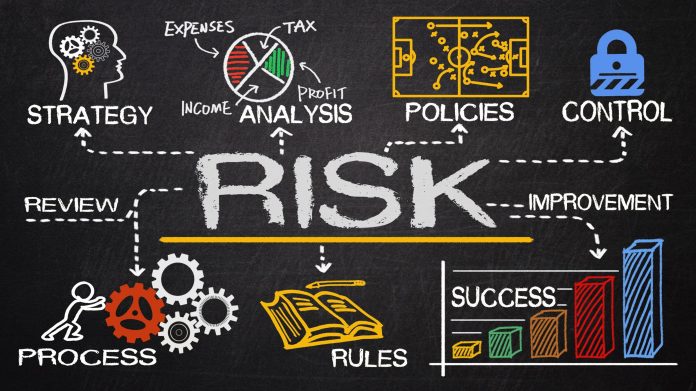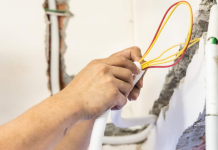Building your dream home is an exciting endeavour, and more people than ever are taking on this challenge as a solution to the housing crisis. In an era where personalization and uniqueness are highly valued, constructing your own home offers the promise of creating a space that perfectly fits your lifestyle and preferences. However, beneath the allure of this dream lies a complex journey filled with numerous challenges and uncertainties, making it crucial to approach the project with a keen awareness of potential risks.
The endeavour of building a home from scratch demands careful planning, foresight, and a thorough understanding of the construction process. From securing permits and navigating zoning regulations to managing budgets and coordinating with contractors, there are countless variables to consider. Neglecting these factors can lead to costly delays, unexpected setbacks, and even compromises in the quality of your dream home. Therefore, to embark on this exciting journey with confidence and ensure that your self-build project is both successful and secure, it is essential to follow a set of key principles and strategies for managing risks during your home construction.
Prioritise Safety Measures:
Safety should be your top priority throughout your self-build project. Ensure that your enthusiasm doesn’t overshadow safety concerns. Familiarise yourself with the Health and Safety at Work Act 1974, which governs construction safety regulations. Additionally, review guidelines provided by the Health and Safety Executive (HSE) for safety training and inspections. Continually expand your knowledge in these areas.
Conduct thorough risk assessments, identify common hazards, and develop strategies to mitigate them. Be mindful of who is at the highest risk and when. Maintain a disciplined approach, with everyone involved in the project staying vigilant.
If you hire a contractor to oversee the project, they are responsible for on-site safety. However, it’s wise to understand the necessary practices and procedures to ensure readiness for any situation. Everyone should actively participate in maintaining a safe environment during off-site home construction.
Secure Structural Warranties:
While not legally required, lenders and other entities often request a structural warranty before engaging with your project. It’s a smart move to heed this recommendation and secure a structural warranty to safeguard your investment. Choosing a reliable structural warranty provider, such as J3 Advisory, is the first step in this direction. They can guide you through various warranty options tailored to your needs.
Structural warranties provide homeowners with a significant peace of mind. These warranties offer coverage for major structural damage, and their benefits can extend for up to ten years. What’s more, you can even obtain a structural warranty after your project has started, allowing you the flexibility to address potential issues as they arise, ensuring your dream home remains a secure and long-lasting investment.
Enhance Security Measures:
It’s easy to focus solely on internal project concerns, but site security is equally important. Implement clear signage directing workers to safe assembly points for emergency procedures. Maintain an accurate site map to ensure workers can navigate safely and efficiently. Access to a phone should be mandatory in case of accidents. Well-lit areas discourage potential intruders, so consider leaving lights on overnight. Schedule deliveries as needed to avoid attracting thieves. Depending on your project’s nature, you may opt for security guards or temporary surveillance systems. Fence off and clearly mark the build area perimeter to notify passersby of ongoing work. Properly cordoned areas prevent accidental trespassing and ensure everyone receives proper notice.
Research Contractors:
While self-build projects often involve the owner’s hands-on work, specialist contractors are still essential for specific tasks. It’s important to dispel the misconception that hiring contractors allows you to take a backseat in the project. Your active involvement and oversight are crucial.
Contractor disputes can be time-consuming and financially draining to resolve, potentially jeopardising your project’s timeline and budget. To mitigate these risks, diligent research is paramount. Take the time to thoroughly investigate potential contractors, scrutinising their credentials, past projects, and client feedback. Resist the temptation to cut corners during the selection process; investing in the right professionals will pay dividends in the long run.
Establishing a clear line of communication through regular meetings and setting clear expectations about task delegation will further streamline your self-build project. By fostering a collaborative and well-defined working relationship with contractors, you can minimise misunderstandings and ensure that your dream home is built to your exact specifications while reducing potential risks along the way.
Conclusion:
In conclusion, building your dream home is an exciting journey that requires careful consideration of potential risks. Balancing your enthusiasm with a commitment to safety and risk management is paramount. Prioritising safety, obtaining structural warranties, enhancing on-site security, and conducting thorough research when hiring contractors are fundamental steps to ensure a smooth and secure self-build experience.
By following these recommendations, individuals can not only fulfil their dreams of owning a custom-built home but also enjoy the peace of mind that comes with a well-executed and risk-mitigated construction project. In a world where housing challenges persist, taking on the responsibility of building your own home can be a rewarding and secure path towards realising your homeownership dreams
















